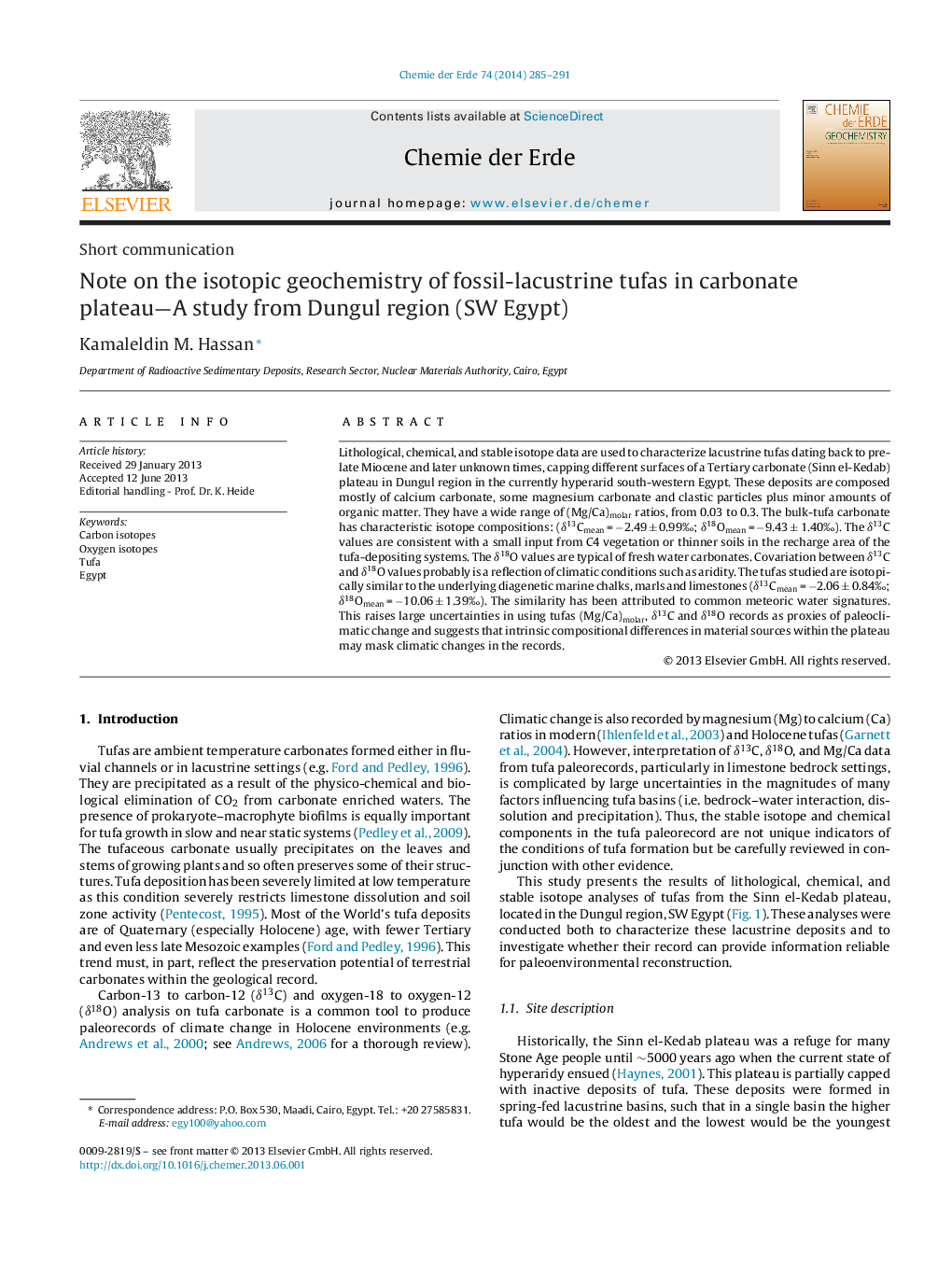| Article ID | Journal | Published Year | Pages | File Type |
|---|---|---|---|---|
| 4406933 | Chemie der Erde - Geochemistry | 2014 | 7 Pages |
Lithological, chemical, and stable isotope data are used to characterize lacustrine tufas dating back to pre-late Miocene and later unknown times, capping different surfaces of a Tertiary carbonate (Sinn el-Kedab) plateau in Dungul region in the currently hyperarid south-western Egypt. These deposits are composed mostly of calcium carbonate, some magnesium carbonate and clastic particles plus minor amounts of organic matter. They have a wide range of (Mg/Ca)molar ratios, from 0.03 to 0.3. The bulk-tufa carbonate has characteristic isotope compositions: (δ13Cmean = −2.49 ± 0.99‰; δ18Omean = −9.43 ± 1.40‰). The δ13C values are consistent with a small input from C4 vegetation or thinner soils in the recharge area of the tufa-depositing systems. The δ18O values are typical of fresh water carbonates. Covariation between δ13C and δ18O values probably is a reflection of climatic conditions such as aridity. The tufas studied are isotopically similar to the underlying diagenetic marine chalks, marls and limestones (δ13Cmean = −2.06 ± 0.84‰; δ18Omean = −10.06 ± 1.39‰). The similarity has been attributed to common meteoric water signatures. This raises large uncertainties in using tufas (Mg/Ca)molar, δ13C and δ18O records as proxies of paleoclimatic change and suggests that intrinsic compositional differences in material sources within the plateau may mask climatic changes in the records.
